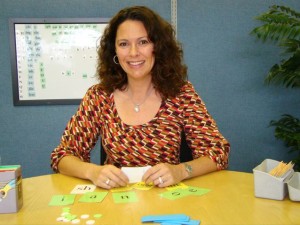
Reading Comprehension Strategies for Students with Learning Disabilities
Many students with Learning Disabilities process information differently. They may be unaware of simple reading comprehension strategies that strong readers use automatically, such as rereading passages they do not understand.
Students with learning disabilities typically recall less about stories they have read and cannot easily identify the important information in them. Here are a few reading comprehension strategies that can be used either at home or in the classroom to help students with learning disabilities comprehend and understand text.
Retelling
Retelling is a frequently used process that involves asking students to recall and restate the events in a story after they have read it or heard it. Teachers or parents should first model the different parts of the story for the student. For example, starting a story by saying “once upon a time,” and then prompting the student to retell the story by asking:
- Who is the story about?
- Where does the story take place?
- What is the main character’s problem?
- How does the main character try to solve the problem?
- How does the story end?
Theme Scheme
The use of a theme scheme during explicit instruction in reading comprehension will help students transfer the strategies they learn to novel texts. The Theme Scheme includes the following steps:
- Introduction and pre-reading discussion: The teacher defines the concept of THEME and introduces the background of the specific story for that lesson.
- Reading the story: The teacher reads the story aloud, stopping to ask questions designed to encourage the student to process the theme.
- Discussion: The teacher and student discuss the following questions:
- Who is the main character?
- What is the main character’s problem?
- What did the main character do about the problem?
- What happened next?
- Was that good or bad?
- Why was it good or bad?
- The main character learner that her or she should _____________.
- Apply the theme to other story examples and to real life experiences: The teacher introduces another story that provides another instance of the same theme. The teacher and student discuss the example using the above 7 questions plus:
- When is it important to ________?
- In what situation is it easy/difficult to ________?
- Review: The teacher reviews the above questions and asks the student to think about other examples.
A follow up activity: The teacher leads a follow-up enrichment activity, such as writing, drawing, discussion, or role- playing.
Predicting
In this activity, the teacher reads a story to the student or has them read the story aloud. The teacher stops the reader before getting to the story’s resolution. Then the teacher asks the student to predict what comes next in the unfinished story. Another option is that the teacher can provide a list of possible endings from which the student can choose.
Cloze Activity
The teacher removes a portion of text from the middle of a story and then has students fill in the missing information. To optimize the benefits of this approach, it is valuable to discuss the types of information that would be anticipated. For example, the teacher might remove the description of the problem faced by the characters in the story. The teacher then could show the student a story map and then ask the student what aspect of the map is not obvious in the story. The student can brainstorm possible problems that would make sense, given the other information presented in the story.
The above strategies are designed to enhance reading comprehension and have been used to teach students with learning disabilities, with promising results. Students struggling with reading comprehension can achieve gains, including the ability to transfer what they have learned to novel texts, when they are given highly structured and explicit instruction in reading comprehension.
Learn more about the New PRIDE Reading Program
________________________________________________________________________
Karina Richland, M.A. is the Founder of PRIDE Learning Centers, located in Los Angeles and Orange County. Ms. Richland is a certified reading and learning disability specialist. Ms. Richland speaks frequently to parents, teachers, and professionals on learning differences, and writes for several journals and publications. You can visit the PRIDE Learning Center website at: www.pridelearningcenter.com


